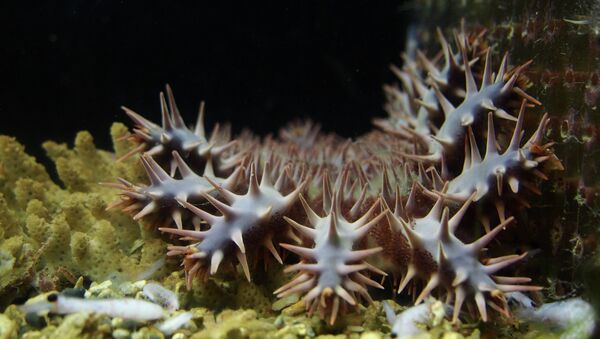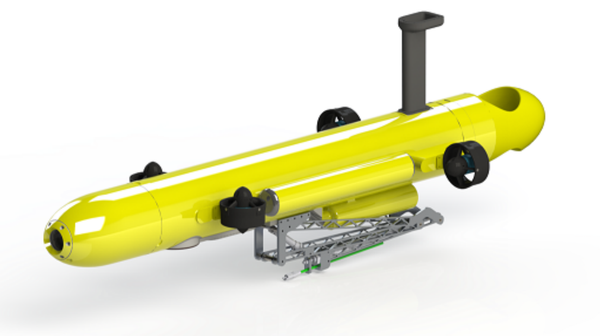A media release on the university’s website tells the whole story of the world’s first-ever underwater robot designed to serve and protect the Great Barrier Reef, a massive coral ecosystem included in UNESCO’s World Heritage List, which stretches 1,400 miles along the north-eastern coast of Australia and claims a total area of around 133,000 square miles.
The machine, dubbed COTSbot, completed its primary sea trial this week, where its mechanics and navigational systems were tested by the bot’s ‘fathers,’ QUT roboticists.
@QUTSciEng Robotics club Showcase event…robotics for env purposes..Dr Matthew Dunbabin #coolrobotics pic.twitter.com/wUvAfqtuOX
— Maria Barrett (@barretmj) September 17, 2014
COTSbot’s specialized state-of-the-art computer vision, developed in the QUT’s Institute of Future Environments by Dr. Matthew Dunbabin, means it’s able to operate autonomously underwater. The system allows it to recognize underwater targets and to learn from each mission.
“Its computer system is backed by some serious computational power so COTSbot can think for itself in the water,” said Dr. Feras Dayoub of QUT's Science and Engineering Faculty and Australian Centre for Robotic Vision.
Moreover, in the situation where COTSbot is unable to identify a target on its own, it sends high-definition images to human specialists, who can then approve or reject the robot’s hunt-and-destroy mission. The bot then learns on its own from this type of interaction with humans.
A deadly exterminator like COTSbot requires a powerful weapon capable of taking out its target with a single shot. A breakthrough recently made at another Queensland research center, James Cook University (JCU) in Townsville, helped out the QUT team.“I was really pleased to hear about JCU's announcement last year of a one-shot injection method that had proved just as effective,” Dunbabin said.On a single 8-hour raid the assassin bot is capable of administering 200 deadly injections.
The bot’s arch enemy: a voracious sea star, quite unlike the charming starfish tourist snorkelers seek out. The crown-of-thorns starfish (COTS), described as a major threat to coral and for which the ultimate killer bot is named, have been taking advantage of the influx of nutrients from the land into the sea since the 1960s, and their numbers — and destructive potential — are soaring.
COTS are responsible for no less than a 40 percent decline in coral cover, according to the QUT release. And, without intervention, the decimation of the underwater treasure shows no signs of letting up.
“Human divers are doing an incredible job of eradicating this starfish from targeted sites but there just aren't enough divers to cover all the COTS hotspots across the Great Barrier Reef,” Dunbabin said.
The COTSbot, then, is seen as a frontline fighter, with human divers following days after the robot strikes to liquidate any remaining starfish.
“The COTSbot becomes a real force multiplier for the eradication process the more of them you deploy — imagine how much ground the programs could cover with a fleet of 10 or 100 COTSbots at their disposal, robots that can work day and night and in any weather condition.”
A team of the killing machines is due to start their full-scale starfish-icides in December.
COTS, you’ve been given notice.




